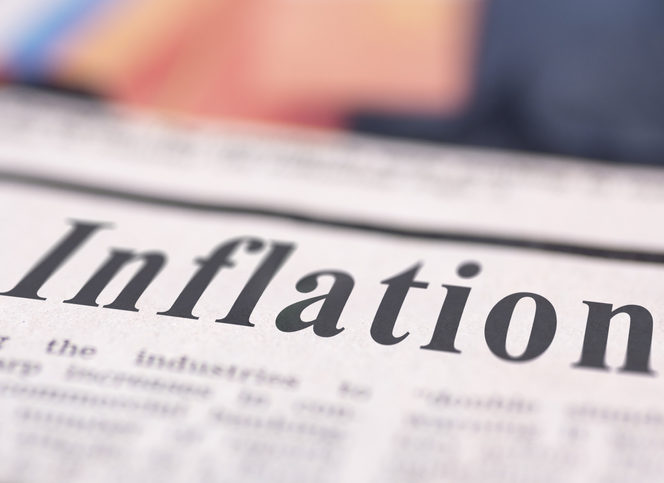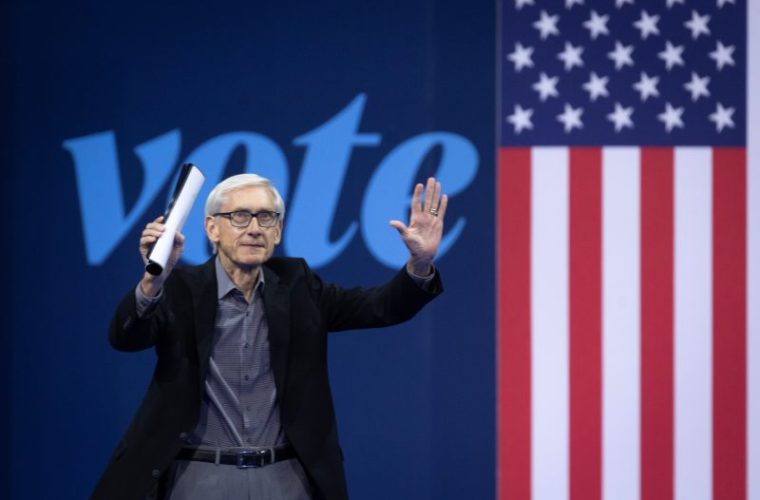
A Primer on Inflation
 Everyone is talking about inflation, but what is it? Why does it matter? What causes it? And what can the Federal Reserve do about it? This primer will address those questions with the goal of improving the public’s understanding of inflation and the role of the central bank.
Everyone is talking about inflation, but what is it? Why does it matter? What causes it? And what can the Federal Reserve do about it? This primer will address those questions with the goal of improving the public’s understanding of inflation and the role of the central bank.
What Is Inflation?
Inflation is best described as a persistent rise in the general level of prices. It is not enough for only the price of used cars to increase over time, or even all prices across the entire economy to increase just once. The rise must be both persistent and general.
The difficulty in discerning an increase in the relative price of a good from an increase in the general price level has been a common source of confusion. For example, during the pandemic and lockdown, the supply of computer chips used in cars declined, which delayed the production of new cars. With nowhere else to turn, consumers flocked to used cars, which led to much higher prices. Market demand and supply conditions are changing all the time: some prices rise and some fall, but an increase in the price of a lone good, or even several, is not enough to suggest inflation is at work.
Why Does Inflation Matter?
Inflation decreases the purchasing power of money. Each dollar is worth less because goods and services are, in general, more expensive. Even a low rate of inflation, if persistent, can have a significant impact on the long-run purchasing power of money. For example, inflation of 2 percent per year, if sustained, doubles the price level every 35 years. So a dollar would lose half of its purchasing power.
Debtors and creditors both suffer during prolonged inflation due to a loss of purchasing power. However, debtors are relatively better off, assuming that contracts and interest rates aren’t adjusted for inflation. For example, if someone took out a fixed rate, 30-year mortgage at 2 percent and inflation turned out to be 3 percent over the life of the mortgage, the debtor (borrower) would end up paying a real interest rate of negative 1 percent. That’s a good deal for the debtor, but not for the creditor (lender).
If inflation is high and variable, it can distort market prices, including the price of credit (i.e., the interest rate). Resources will be misallocated; uncertainty about the future value of money will make rational investment decisions more difficult. The stagflation of the 1970s and early 1980s, when the United States suffered from both high inflation and unemployment, provides evidence that easy money and inflation are not conducive to economic growth and prosperity.
What Causes Inflation?
Inflation has most often been caused by excessive increases in the money supply, but it’s not as simple as it sounds. The relationship between the quantity of money and the general level of prices is not 1-for-1 and the timing of changes is often subject to long and variable lags. And to complicate matters further, today’s Federal Reserve doesn’t pay much attention to the money supply. Most of the attention is given to interest rates—in particular, how the Fed’s large-scale asset purchases, also known as quantitative easing (QE), and forward guidance will affect longer-run interest rates. But that wasn’t always the case.
Clark Warburton, writing in 1947, warned about “upside-down monetary policy,” by which he meant a focus on regulating interest rates rather than controlling the quantity of money as the primary purpose of the Fed. According to Warburton:
Interest-rate regulation came into vogue as the chief instrument, and later as the objective, of monetary policy. The latter was a fatal error—for it turned the quantity-of-money interest-rate relationship upside down. Central banks tried to use variations in the interest rate both as a technique and as a guide for the provision of a suitable quantity of money in the economy, whereas they should have used provision of a suitable quantity of money as a technique for achieving price-level stability and freedom of the rate of interest.
Likewise, Milton Friedman emphasized that “inflation is always and everywhere a monetary phenomenon” caused by an excess supply of money relative to the demand for real cash balances. He understood that a decline in the supply of particular goods and services can temporarily increase the price level, as measured by the consumer price index (CPI). However, if there is no change in the quantity of money, or the quantity of money grows at a slower rate than real income (output), then the general level of prices cannot persistently increase.
For a given level of output in the economy and a given turnover rate of money (velocity), increases in the money supply eventually show up in increases in the price level. History has shown that rapid increases in the money supply, which outpace growth in real output, lead people to expect higher prices. Individuals and businesses will then reduce their cash balances, the velocity of money will increase, and inflation will accelerate.
In fact, governments themselves often initiate inflationary episodes when they try to finance excess spending by having the central bank monetize the debt. In other words, fiscal policymakers use the central bank to provide funding via expansionary monetary policy rather than raise taxes or sell debt to the public. That route to inflation is called “fiscal dominance.”
Today, the Federal Reserve is buying up a large share of newly issued government debt to finance bulging deficits, but inflation is still not far above the Fed’s long-run target of 2 percent. How is that possible?
The primary reason is that the Fed’s post-2008 operating system allows the central bank to pay interest on reserves (IOR). If that rate is higher than the risk-adjusted return banks could get elsewhere, and if banks are required to hold reserves as part of their capital buffer, then they will have an incentive to park reserves at the Fed rather than lend them out. Consequently, when the Fed buys assets in the open market, and creates reserves in the process, the normal multiplier effect on the money supply will be diluted, along with the impact on prices and nominal income.
The breakdown of the usual multiplier also occurs when interest rates hit the so-called zero lower bound (i.e., when nominal rates approach zero), as has been the case both in 2009 and recently.
What Can the Federal Reserve Do About Inflation?
The Federal Reserve Act (Section 2A) mandates that the Fed maintain long-run price stability and foster maximum employment. Here’s the exact wording:
The Board of Governors of the Federal Reserve System and the Federal Open Market Committee shall maintain long run growth of the monetary and credit aggregates commensurate with the economy’s long run potential to increase production, so as to promote effectively the goals of maximum employment, stable prices, and moderate long-term interest rates.
In 2012, the Fed adopted an inflation target of 2 percent, but inflation has been consistently below that target since its adoption. To make up for the shortfalls, the Fed implemented “flexible average inflation targeting” (FAIT) in August 2020. The idea is to let inflation exceed 2 percent for some time until the average returns to 2 percent—though, the exact starting and ending points are unclear. However, there is a risk. If the Fed lets inflation run too hot for too long, confidence in the dollar as a stable-valued currency will erode and the Fed’s credibility will suffer.
It should be noted that under the Fed’s current operating system, known as the “floor system,” QE never has to be reversed to keep inflation under control. It suffices, as the economy recovers, to raise IOR sufficiently to maintain banks’ willingness to hoard reserves.
Another route the Fed could take is that, instead of attempting to fine-tune inflation, policymakers could focus on stabilizing the growth of total spending—that is, nominal gross domestic product (NGDP) or nominal income—and allow market forces to determine the split between the growth of real output and inflation. Flexibility in the price level, which moves inversely with changes in real output, would be limited by the constraint on the growth of NGDP over time. That constraint could be institutionalized by adopting an appropriate monetary rule. Such a rule would reduce the uncertainty that exists under the present discretionary government fiat money regime.
Conclusion
The acceleration of 12-month CPI inflation from 5 percent in May to 5.4 percent in June should be a wake-up call for the Fed. Chairman Powell sees current inflationary pressures as transitory. But with more rapid monetary growth and velocity rising, policymakers need to take the possibility of inflation seriously—especially in light of massive government deficits that may be monetized.
The Fed has promised to keep interest rates near zero and to maintain its massive balance sheet, which now exceeds $8 trillion, until the economy reaches its full potential, but it has also proclaimed that it wants inflation to increase to make up for undershooting. That approach could backfire if inflationary expectations rise and the Fed policymakers don’t step on the monetary brakes soon enough. A better understanding of the basics of inflation is a first step in producing better policy and safeguarding the property rights individuals have in a stable-valued currency.
The post A Primer on Inflation appeared first on Alt-M.




